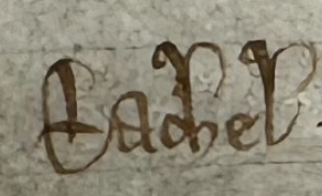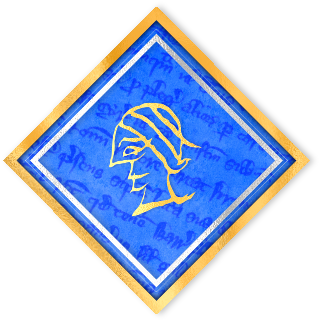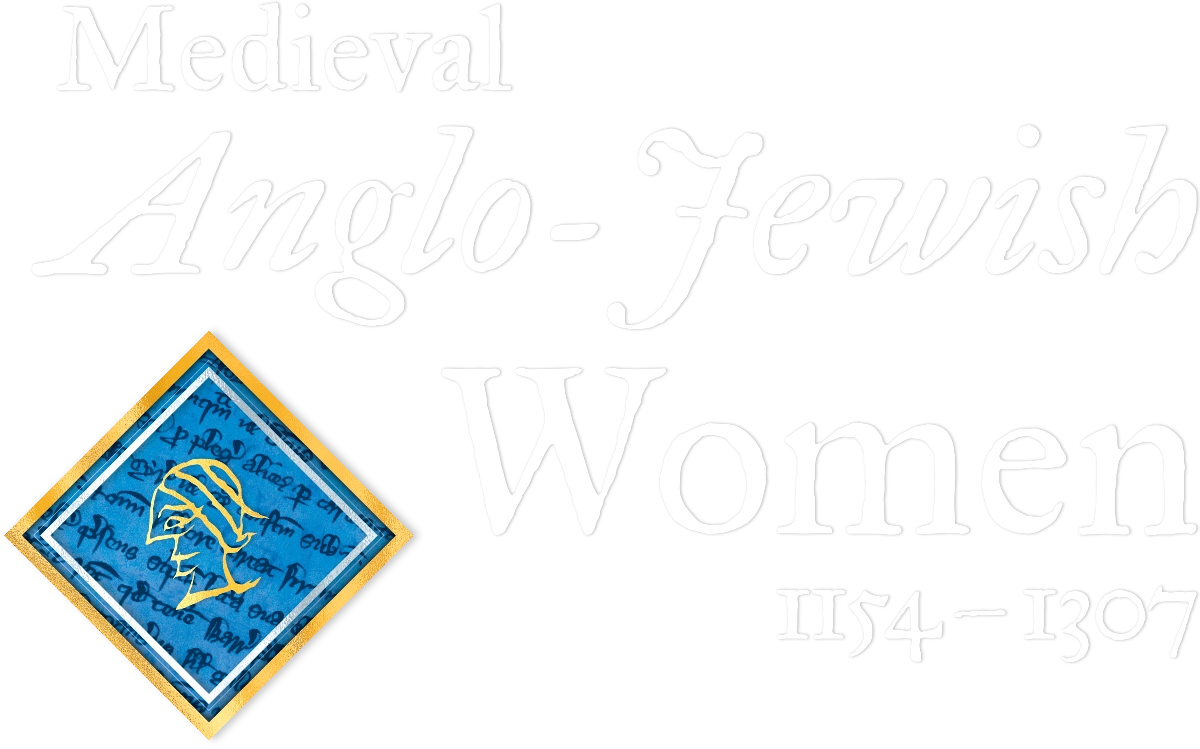Rachel Lumbard of Nottingham
Referred to in records as: “filia sua”, “Rachel”, “Rachel fil Dauid”, “Rachel fil’ Dauid”, “Rachel of Nottingham”, “Rachelʼ”, “Rachelʼ Notingʼ”.
Brief biography

Rachel was the daughter of David Lumbard, chirographer
of Nottingham from 1230–1231 and later its ballivus (bailiff or royal
official, head of the Nottingham Jewish community). Along with her father and brothers
Moses and Amiot, she
worked as a financier from the 1230s to the 1250s. There is no evidence that she ever
married or had children, and she was likely dead by the mid 1250s. She first appears
in
surviving records in 1232, already an adult, in a royal order to extract from the
Nottingham archa (chest holding Jewish bonds) any documents or tally sticks showing
transactions between Hugh Tothill, son of the parson of Carlton (Notts), and David,
Moses, or Rachel. In 1236, the king ordered a survey of lands in Aylestone
(Leics) that were held in pledge by Rachel and her brother Moses. This early partnership
with her father and Moses suggests that Rachel should not be excluded from the
affections and associations that have sometimes been attributed to father and son
exclusively.
By the 1240s, Rachel worked with her brother Amiot, elected
chirographer in 1241, and his daughter Murielda. The Plea Rolls of the Exchequer
of the Jews show Rachel managing three debts with him in this period, totalling more
than £42. By 1245, she was an independent creditor to three Christian men, one of
these
debts acknowledged through a Hebrew starr written for her by Amiot. In the same year,
the Justices of the Exchequer of the Jews at Westminster sent twelve of her chirographs
to the sheriff of Nottingham, who was to seize the debtors’ property until they paid
her. While this trajectory shows a maturing businesswoman, functioning independently
if
within a wealthy family network, Rachel was likely taxed out of business, as were
many
from 1241 to 1255 when King Henry III’s brutal taxation of English Jews was at
its peak. Rachel, ultimately, was also beholden to her male relatives. The 1245 scrutiny
of her debts, for example, was undertaken because she owed £12 towards the king’s
£10,000 tallage of 1246. While this is not an insignificant percentage for a single
woman, an endorsement of the Justices’ order shows that she was only able to collect
about £8, and that the collected money was to go to her brothers to contribute to
the
family’s obligations.
When debts in the Nottingham archa were seized by royal order in
1251, Rachel had just five bonds, with a local Christian butcher, goldsmith, and
citizen, and with two men from Ratcliffe-on-Soar (Notts). She is not mentioned
again after this and probably died sometime between 1251 and 1255: in 1255, her brother
Amiot released Thomas Brien of Ratcliffe-on-Soar, one of the men to whom Rachel was
a
creditor in 1251, from all debts owed to the family. By 1262, when the Nottingham
archa
was once again scrutinized, only a single family bond remained: that of Rachel’s
sister-in-law Ivette, Moses’ widow.
Further reading
- Hillaby, J. and C. Hillaby, The Palgrave Dictionary of Medieval Anglo-Jewish History. London: Palgrave. 2015, s.v. The English Medieval Jewry, c.1075–1290: The Impoverishment of the Jewry, 1241–55 and Nottingham: David Lumbard and Family, 1230–55, pp. 7–9 and 291.
- Olszowy-Schlanger, J., ed. Hebrew and Hebrew-Latin Documents from Medieval England: A Diplomatic and Palaeographical Study. Volume 1. Turnhout: Brepols. 2015, nos. 13, 46, and 55.
- Olszowy-Schlanger, J., ed. Hebrew and Hebrew-Latin Documents from Medieval England: A Diplomatic and Palaeographical Study. Volume 2. Turnhout: Brepols. 2015, no. 155.
- The National Archives of the UK (TNA), DL 25/2381, DL 25/2382/2068, and E 40/14957.
Dates mentioned in records
1221–1251
Locations
Surrey, Nottinghamshire
Relatives
- Amiot father of Murielda (brother)
- David Lumbard father of Rachel (father)
- Moses son of David Lumbard (brother)
- Isaac son of Moses Lumbard (nephew)
- Unnamed daughter of Moses Lumbard (niece)
Records
- 1221: Donum/Tallage
- 1232, Nottinghamshire: Debt
- 1233: Donum/Tallage
- 1236, Nottinghamshire: Property, Debt
- 1244, Surrey: Debt
- 1244–1245, Nottinghamshire: Debt
- 1245, Nottinghamshire: Debt
- 1245, Nottinghamshire: Debt
- 1246–1247, Nottinghamshire: Donum/Tallage
- 1247, Nottinghamshire: Debt
- 1250, Nottinghamshire: Audit of chest
- 1251, Nottinghamshire: Debt, Audit of chest

